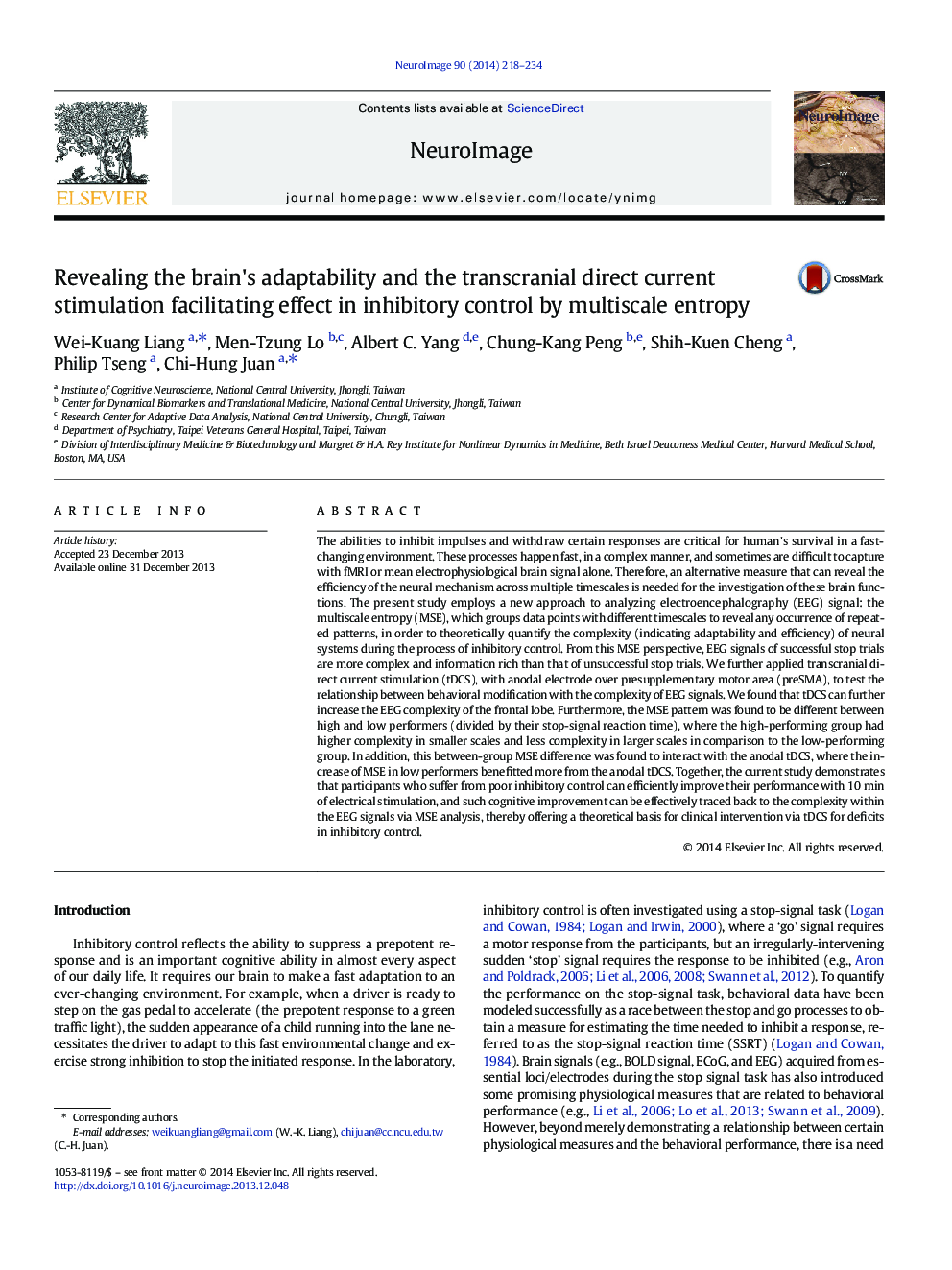| کد مقاله | کد نشریه | سال انتشار | مقاله انگلیسی | نسخه تمام متن |
|---|---|---|---|---|
| 6027375 | 1580915 | 2014 | 17 صفحه PDF | دانلود رایگان |
- We use multiscale entropy (MSE) to quantify the efficiency of inhibitory control.
- MSE of EEG signals of successful stop trials is higher than unsuccessful stop trials.
- We use MSE to account for the effect of brain stimulation in inhibitory control.
- Anodal transcranial direct current stimulation can increase MSE of the frontal lobe.
- We identify the MSE pattern of superior performance in inhibitory control.
The abilities to inhibit impulses and withdraw certain responses are critical for human's survival in a fast-changing environment. These processes happen fast, in a complex manner, and sometimes are difficult to capture with fMRI or mean electrophysiological brain signal alone. Therefore, an alternative measure that can reveal the efficiency of the neural mechanism across multiple timescales is needed for the investigation of these brain functions. The present study employs a new approach to analyzing electroencephalography (EEG) signal: the multiscale entropy (MSE), which groups data points with different timescales to reveal any occurrence of repeated patterns, in order to theoretically quantify the complexity (indicating adaptability and efficiency) of neural systems during the process of inhibitory control. From this MSE perspective, EEG signals of successful stop trials are more complex and information rich than that of unsuccessful stop trials. We further applied transcranial direct current stimulation (tDCS), with anodal electrode over presupplementary motor area (preSMA), to test the relationship between behavioral modification with the complexity of EEG signals. We found that tDCS can further increase the EEG complexity of the frontal lobe. Furthermore, the MSE pattern was found to be different between high and low performers (divided by their stop-signal reaction time), where the high-performing group had higher complexity in smaller scales and less complexity in larger scales in comparison to the low-performing group. In addition, this between-group MSE difference was found to interact with the anodal tDCS, where the increase of MSE in low performers benefitted more from the anodal tDCS. Together, the current study demonstrates that participants who suffer from poor inhibitory control can efficiently improve their performance with 10Â min of electrical stimulation, and such cognitive improvement can be effectively traced back to the complexity within the EEG signals via MSE analysis, thereby offering a theoretical basis for clinical intervention via tDCS for deficits in inhibitory control.
Journal: NeuroImage - Volume 90, 15 April 2014, Pages 218-234
